Home>Garden Essentials>Garden Storage>Vegetable Garden Container Ideas For Growing Crops In Pots
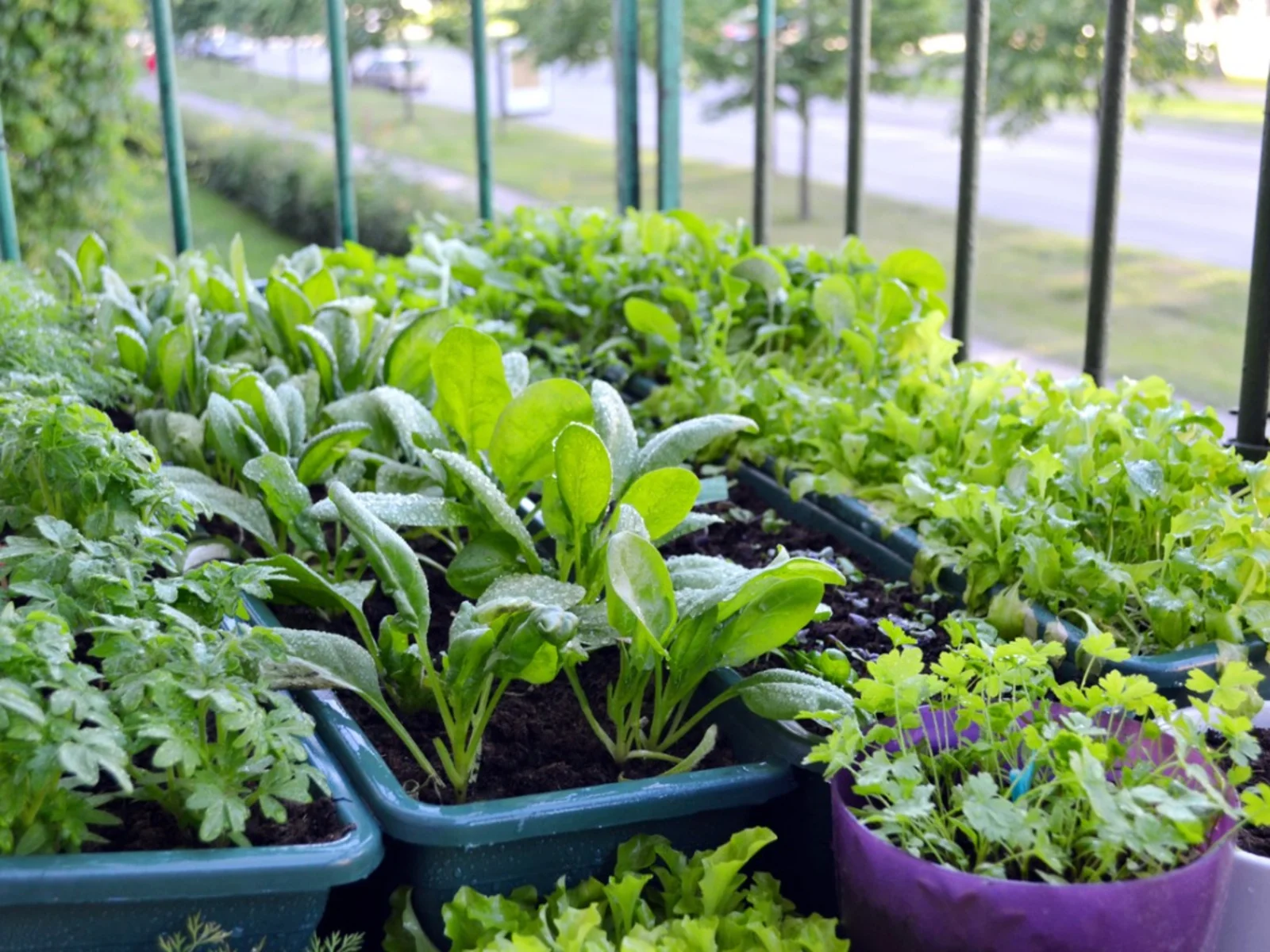

Garden Storage
Vegetable Garden Container Ideas For Growing Crops In Pots
Modified: October 20, 2024
Discover creative container ideas for growing crops in pots, including efficient storage solutions to maximize your vegetable garden space.
(Many of the links in this article redirect to a specific reviewed product. Your purchase of these products through affiliate links helps to generate commission for Storables.com, at no extra cost. Learn more)
Vegetable Garden Container Ideas for Growing Crops in Pots
If you don’t have access to a traditional garden space or if you simply want to maximize your gardening potential, container gardening is the perfect solution. By using pots and other containers, you can grow a wide variety of vegetables right on your patio, balcony, or even indoors. In this article, we will explore some creative and practical vegetable garden container ideas to help you successfully grow crops in pots.
Key Takeaways:
- Container gardening offers flexibility, improved soil control, and easier maintenance. It’s a space-saving, aesthetically pleasing way to grow a variety of vegetables, even in limited outdoor or indoor spaces.
- With the right containers, suitable vegetables, and essential care, container gardening can yield a bountiful harvest. Enjoy the satisfaction of harvesting fresh, homegrown produce and the joy of nurturing your own unique vegetable garden.
Benefits of Container Gardening
Container gardening offers several benefits that make it an attractive option for both beginners and experienced gardeners. Firstly, it allows you to overcome space limitations. Whether you live in an apartment, have a small yard, or want to utilize your porch or windowsills, container gardening enables you to maximize your available space.
Furthermore, container gardening provides better control over soil quality and drainage. You can tailor the soil composition to suit the specific needs of different vegetable plants, ensuring optimal growth and health. Additionally, containers provide easy access to plants, making watering, fertilizing, and pest control more manageable.
Choosing the Right Containers
When selecting containers for your vegetable garden, consider the size, material, and drainage capabilities. Opt for containers that are at least 10-12 inches deep to accommodate the root systems of most vegetables. Plastic, ceramic, and clay pots are all suitable options, but make sure they have drainage holes to prevent waterlogging.
If you have limited space, vertical gardening using hanging baskets, tiered planters, or wall-mounted containers can be a great choice. This method utilizes vertical space, allowing you to grow more plants in a smaller area.
Selecting the Ideal Vegetables for Container Gardening
Not all vegetables are well-suited for container gardening, so it’s important to choose crops that will thrive in pots. Some great options for container gardening include tomatoes, peppers, lettuce, spinach, radishes, and herbs like basil, parsley, and mint.
Consider the space requirements, light preferences, and growth habits of each vegetable when planning your container garden. Opt for compact varieties, dwarf cultivars, or plants that can tolerate being grown closely together.
Essential Tips for Successful Container Gardening
To ensure the success of your container garden, follow these important tips:
1. Use well-draining potting soil: Choose a high-quality potting mix that holds moisture but also allows excess water to drain out.
2. Provide adequate sunlight: Most vegetables require at least 6-8 hours of direct sunlight per day. Place your containers in a spot that receives enough light.
3. Water regularly: Containers tend to dry out faster than traditional garden beds. Check the moisture level of the soil daily and water as needed, ensuring the soil remains consistently moist but not waterlogged.
4. Fertilize regularly: Nutrients in container gardens deplete faster compared to in-ground gardens. Use organic fertilizers or slow-release granules to provide essential nutrients to your plants.
5. Monitor pests and diseases: Inspect your plants regularly for pests or signs of disease. Take preventive measures or use organic pest control methods to protect your crops.
Read more: What To Grow In Garden
Vertical Gardening Techniques for Limited Space
If you have limited space, vertical gardening techniques can help maximize your growing area. Consider using trellises, stakes, or cages to support climbing vegetables like peas, cucumbers, and beans. Hanging planters or vertical garden systems are also great options for growing strawberries and trailing herbs.
Creative Container Ideas for Unique Vegetable Gardens
Get creative with your containers to add an aesthetic appeal to your vegetable garden. You can use traditional pots, but don’t be afraid to repurpose unconventional items like wooden crates, metal buckets, old wheelbarrows, or even recycled containers. Just ensure they have the necessary depth, drainage, and stability for healthy plant growth.
Maintaining and Caring for Container Gardens
Maintaining container gardens involves regular care and attention to ensure optimal plant growth. Here are some essential maintenance practices:
1. Regularly check soil moisture: Water your plants whenever the top inch of soil feels dry. Avoid overwatering or allowing the soil to dry out completely.
2. Prune and pinch back plants: Remove yellowing or dead leaves and regularly pinch back leggy growth to encourage bushier, healthier plants.
3. Support tall or heavy plants: Stake or tie up plants that may become top-heavy or prone to tilting under the weight of fruit or foliage.
4. Rotate the containers: To ensure even sun exposure, rotate your containers periodically so that all sides of the plant receive sufficient light.
Troubleshooting Common Issues in Container Gardening
Container gardens can face challenges such as nutrient deficiencies, pest infestations, and fungal diseases. Regularly monitor your plants for signs of these issues and take appropriate actions, such as using organic fertilizers, practicing crop rotation, using companion planting, or applying natural pest control methods.
Read more: How To Grow Mustard Seeds In Pots
Harvesting and Enjoying the Fruits of Your Container Garden
One of the most rewarding aspects of container gardening is the joy of harvesting fresh, homegrown vegetables. As your crops mature, follow the specific harvest guidelines for each vegetable. Harvesting at the peak of ripeness ensures the best flavor and nutritional value.
With the right container garden ideas and proper care, you can enjoy a bountiful vegetable harvest right at your fingertips, regardless of your available space. Get creative, experiment with different vegetables, and watch your container garden thrive!
Key Takeaways:
- Container gardening offers flexibility, improved soil control, and easier maintenance. It’s a space-saving, aesthetically pleasing way to grow a variety of vegetables, even in limited outdoor or indoor spaces.
- With the right containers, suitable vegetables, and essential care, container gardening can yield a bountiful harvest. Enjoy the satisfaction of harvesting fresh, homegrown produce and the joy of nurturing your own unique vegetable garden.
Benefits of Container Gardening
Container gardening offers numerous advantages that make it an appealing option for both novice and experienced garden enthusiasts. Here are some of the key benefits:
1. Flexibility and Accessibility: One of the main benefits of container gardening is its flexibility. Unlike traditional gardens, container gardens can be placed anywhere, such as on a balcony, patio, or even indoors. This makes it an excellent solution for individuals who have limited outdoor space or who reside in apartments or urban areas.
2. Improved Soil Control: With container gardening, you have complete control over the soil composition. This allows you to create an ideal growing environment for your plants. You can choose the right potting mix and amend it with compost or other organic matter to ensure optimal nutrient levels and proper drainage. This is particularly beneficial in areas where the natural soil quality is poor.
3. Easier Maintenance: Container gardens are generally easier to maintain compared to traditional gardens. The compact nature of containers allows for better weed control, reducing the time and effort required for maintenance. Additionally, container gardens require less water since the soil in pots tends to retain moisture better than open ground soil.
4. Pest and Disease Management: Container gardening can help minimize the risks of pests and diseases that commonly afflict plants in traditional gardens. By keeping your plants in containers, you can create a physical barrier that helps protect them from common garden pests like slugs, snails, and soil-borne diseases. This reduces the need for chemical pesticides and fungicides, making container gardening a more environmentally friendly option.
5. Extended Growing Season: Container gardens can be easily moved around to take advantage of optimal sunlight and temperature conditions. This means you can extend your growing season by bringing your potted plants indoors during colder weather or placing them in partial shade during scorching summer months. This flexibility allows for year-round gardening and the ability to grow plants that may not flourish in your region’s climate.
6. Aesthetic Appeal: Container gardens offer endless opportunities for creativity and aesthetic appeal. You can choose containers of different colors, shapes, and sizes to match your personal style and enhance the overall look of your outdoor or indoor space. Container gardening also allows you to experiment with vertical gardening, which adds a unique and visually appealing element to your garden.
7. Accessibility for Gardeners with Physical Limitations: Container gardening is a great option for individuals with physical limitations or disabilities who may find it challenging to tend to a traditional garden. The raised height of containers can alleviate the need for bending or kneeling, making it more accessible and enjoyable for individuals with mobility issues.
Overall, container gardening provides a convenient, versatile, and enjoyable way to grow a variety of plants, including vegetables, herbs, and flowers. Whether you have limited space, want more control over soil quality, or simply enjoy the aesthetic appeal, container gardening offers numerous benefits that make it an excellent choice for all garden enthusiasts.
Choosing the Right Containers
When it comes to container gardening, selecting the right containers is crucial for the success of your plants. Here are some factors to consider when choosing the containers for your vegetable garden:
1. Size: The size of the container is an important consideration as it determines the amount of soil available for the roots to grow. Choose containers that are at least 10-12 inches deep for most vegetable plants. This will provide enough room for the roots to spread and ensure sufficient water and nutrient absorption.
2. Material: Containers are available in various materials, including plastic, ceramic, clay, wood, and metal. Each material has its pros and cons. Plastic containers are lightweight, inexpensive, and retain moisture well, but they may not be as aesthetically pleasing. Ceramic and clay pots are durable and visually appealing, but they can be heavy and may require additional drainage holes. Wood containers, such as cedar or redwood, are natural and provide excellent insulation for plant roots. Metal containers, like galvanized steel, are sturdy and come in various sizes and styles. Consider your personal preference, budget, and the specific needs of your plants when selecting the material of your containers.
3. Drainage: Good drainage is essential for container gardening. Ensure that the containers have adequate drainage holes at the bottom to allow excess water to escape. If your chosen container does not have drainage holes, you can make them yourself using a drill or hammer and nails. Insufficient drainage can lead to waterlogging, root rot, and the decline of your plants.
4. Stability: Stability is crucial, especially if you live in an area prone to strong winds or have tall vegetable plants. Avoid narrow and top-heavy containers that can easily tip over. Opt for containers with a wide base or a lower center of gravity to provide stability and prevent accidents.
5. Insulation: Consider the insulation properties of different container materials. Some materials, like plastic and wood, provide better insulation, protecting the roots from temperature fluctuations. This is particularly important for plants that are sensitive to extreme heat or cold.
6. Recyclability: If environmental sustainability is important to you, choose containers made from recyclable materials. Look for containers made from recycled plastic or opt for repurposed items like old buckets, barrels, or crates.
7. Aesthetics: While functionality is essential, don’t forget about the visual appeal of your containers. Choose containers that complement your outdoor or indoor space and enhance the overall look of your vegetable garden. You can find containers in various colors, patterns, and styles, allowing you to express your creativity and personalize your garden.
Remember to consider the specific needs of your plants when selecting containers. Some vegetables, like tomatoes or peppers, may require larger containers, while smaller plants like herbs can thrive in smaller pots. Additionally, consider the growth habits of your chosen plants. For instance, plants with deep-root systems may require deeper containers.
By carefully selecting the right containers, you will provide a suitable environment for your vegetable plants, ensuring their health and productivity in your container garden.
Selecting the Ideal Vegetables for Container Gardening
Container gardening opens up a world of possibilities for growing a variety of vegetables, even in limited spaces. However, not all vegetables are suitable for container gardening. Here are some ideal vegetables that thrive in pots and containers:
1. Tomatoes: Tomatoes are one of the most popular vegetables for container gardening. Choose compact or determinate varieties that grow to a manageable size, such as ‘Roma,’ ‘Celebrity,’ or ‘Cherry Bomb.’ Provide support, such as a trellis or cage, for the plants to grow vertically.
2. Peppers: Peppers, both sweet and hot varieties, are well-suited for containers. Choose compact varieties like ‘California Wonder,’ ‘Jalapeno,’ or ‘Chili Black Pearl.’ Peppers generally have shallow root systems, making them ideal for container gardening.
3. Lettuce: Lettuce is a cool-season vegetable that grows well in containers. Opt for loose-leaf varieties like ‘Buttercrunch’ or ‘Red Salad Bowl’ that don’t require much space and can be harvested as you need them. Plant in successive batches for a continuous supply of fresh greens.
4. Spinach: Spinach is another cool-season vegetable that thrives in containers. Choose varieties that are known for their compact growth habit, such as ‘Baby’s Leaf Hybrid’ or ‘Emperor.’ Spinach grows quickly, making it a great choice for successive plantings and continuous harvest.
5. Radishes: Radishes are fast-growing and have shallow roots, making them ideal for container gardening. Choose varieties like ‘Cherry Belle’ or ‘French Breakfast’ that mature quickly. Sow seeds directly into the container and thin them as needed.
6. Herbs: Many herbs are perfect for container gardening due to their compact growth habit. Some popular herbs to grow in pots include basil, parsley, mint, rosemary, thyme, and cilantro. Plant each herb in its own small container or group compatible herbs together in a larger pot.
7. Carrots: Carrots can be successfully grown in tall, deep containers. Choose shorter varieties like ‘Nantes’ or ‘Little Finger’ adapted for container gardening. Ensure the container is deep enough to accommodate the length of the carrot roots.
8. Beans and Peas: Compact varieties of beans and peas can be grown in pots with the support of trellises or stakes. Look for bush varieties or dwarf cultivars to save space. Examples include ‘Bush Blue Lake’ beans or ‘Little Marvel’ peas.
9. Strawberries: Strawberries are excellent candidates for container gardening, especially trailing or hanging varieties. Use pots or raised beds with ample drainage and provide support for the plants. Enjoy the delight of fresh strawberries right from your container garden!
When selecting vegetables for container gardening, choose compact or dwarf varieties whenever possible. These plants have been specially bred to have a more contained growth habit, making them more suitable for the limited space of containers. Also, consider the light requirements of the vegetable you choose and ensure your container garden receives adequate sunlight.
With careful selection and suitable varieties, you can create a thriving vegetable garden in containers. Experiment with different vegetables and enjoy the satisfaction of harvesting your own homegrown produce, even in a small space.
Essential Tips for Successful Container Gardening
Container gardening is a rewarding and versatile way to grow vegetables in limited spaces. To ensure the success of your container garden, consider the following essential tips:
1. Choose the Right Soil: Use a high-quality potting mix specifically designed for container gardening. The potting mix should be well-draining to prevent waterlogged roots and should contain a balanced blend of organic matter, perlite, and vermiculite to provide adequate nutrients and aeration for plant growth.
2. Provide Proper Drainage: Proper drainage is crucial for container gardening. Ensure that your containers have drainage holes at the bottom to allow excess water to escape. Placing a layer of small rocks or pieces of broken pottery at the bottom of the container will help prevent soil from clogging the drainage holes.
3. Water Regularly: Container gardens often require more frequent watering than traditional gardens. Check the moisture level of the soil regularly and water when the top inch feels dry. Avoid overwatering, as it can lead to root rot. The frequency of watering may vary depending on the type of plants, container size, and environmental conditions.
4. Provide Adequate Sunlight: Most vegetables require at least 6-8 hours of direct sunlight per day for optimal growth. Place your containers in a sunny location, such as a south-facing balcony or patio. If sunlight is limited, consider using reflective surfaces or mirrors to redirect and maximize the available sunlight.
5. Fertilize Regularly: Container plants have limited access to nutrients compared to those planted in the ground. Feed your container vegetables regularly with a balanced organic fertilizer or slow-release granules to replenish the nutrients in the soil. Follow the instructions on the fertilizer package for application rates and frequency.
6. Prune and Pinch: Regularly prune and pinch back your plants to promote bushier growth and prevent them from becoming too leggy. Remove any dead, yellowing, or diseased leaves to maintain plant health and prevent the spread of diseases.
7. Provide Support: Some vegetables, like tomatoes, peppers, and beans, may require support as they grow. Use stakes, cages, trellises, or other supports to keep the plants upright and prevent them from bending or breaking under the weight of their fruits or foliage.
8. Practice Crop Rotation: To avoid depleting the soil of essential nutrients and to minimize the risk of pests and diseases, practice crop rotation. Avoid planting the same vegetable family in the same container year after year. Rotate your crops and change the location of your containers to maintain the health of your plants and soil.
9. Monitor Pests and Diseases: Regularly inspect your plants for signs of pests, such as aphids, snails, or caterpillars, and take appropriate measures to control them. Implement organic pest control methods like handpicking, using insecticidal soaps, or introducing beneficial insects. Also, keep an eye out for signs of diseases such as powdery mildew or fungal infections. Promptly address these issues to prevent their spread.
10. Harvest at the Right Time: Lastly, harvest your vegetables at the appropriate stage of maturity to maximize flavor and quality. Follow the recommendations for each vegetable to determine the optimum harvesting time. Enjoy the fruits of your labor by plucking ripe, fresh produce from your containers.
By following these essential tips, you can create a successful container garden that yields healthy and productive vegetables. With proper care, attention, and a bit of green thumb, your container garden will provide you with a bountiful harvest and a sense of satisfaction. Happy gardening!
Read more: What To Grow In Garden
Vertical Gardening Techniques for Limited Space
Vertical gardening is an innovative and space-saving technique that allows you to grow vegetables in a vertical upward direction, utilizing walls, trellises, or other structures. This technique is particularly beneficial for those with limited space or small gardening areas. Here are some popular vertical gardening techniques to maximize your growing area:
1. Trellises and Stakes: Use trellises or stakes to support vining vegetables and climbers like tomatoes, cucumbers, or beans. As the plants grow, gently train them to climb along the trellis or stake, keeping the plant off the ground and opening up valuable space below for other plants or containers.
2. Hanging Baskets: Hang baskets from hooks or railings to grow trailing vegetables and herbs like strawberries, trailing tomatoes, or cascading herbs such as thyme and oregano. Hanging baskets not only save space but also add an aesthetic appeal to your vertical garden.
3. Vertical Garden Towers: Vertical garden towers are freestanding structures that feature multiple tiers or pockets for planting. These towers are often designed with pockets or compartments to accommodate a variety of vegetables and herbs. You can grow a wide range of plants in a small footprint, making the most of your vertical space.
4. Garden Walls: Transform a blank wall into a vibrant and functional vertical garden. Install wall-mounted containers, pocket planters, or modular systems specifically designed for vertical gardening. Choose cascading or compact vegetables, such as salad greens, spinach, or herbs, to create a living wall of edible plants.
5. Pallet Gardens: Repurpose wooden pallets as vertical gardening structures by attaching planters or containers to the flat surfaces. This budget-friendly approach allows you to create a vertical garden with multiple levels, providing ample space for growing vegetables, flowers, or herbs.
6. Living Fences: Plant espaliered fruit trees or tall, vertical-growing vegetable plants like peas or grapevines to create a living fence. This technique not only provides privacy but also optimizes your growing area by utilizing both vertical and horizontal space.
7. Tower Gardens: Tower gardens are vertical hydroponic systems that allow you to grow plants without soil. They use water-based nutrient solutions to feed the plants, making them an efficient and space-saving way to grow vegetables indoors or in small outdoor spaces.
When implementing vertical gardening techniques, consider the weight and stability of the structures you use. Ensure that they can support the weight of the plants and containers. Regularly check the stability of the trellises, stakes, or other structures to avoid any accidents.
Vertical gardening is not only practical for those with limited space but also provides an opportunity to add visual interest and greenery to your surroundings. Whether you have a small balcony or a spacious wall, vertical gardening allows you to maximize your growing area and enjoy a flourishing garden in any size space. Get creative with your vertical garden design and explore the possibilities of growing vegetables vertically.
Creative Container Ideas for Unique Vegetable Gardens
Container gardening doesn’t have to be limited to traditional pots and planters. With a little creativity, you can transform everyday objects into unique and eye-catching containers for your vegetable garden. Here are some creative container ideas that will add a touch of uniqueness to your vegetable garden:
1. Repurposed Wooden Crates: Turn old wooden crates into rustic planters by adding a liner and filling them with soil. Arrange them in a row or cluster for a charming and functional vegetable garden display.
2. Recycled Tires: Give old tires a new purpose by turning them into colorful planters. Paint the tires in vibrant colors and stack them to create a vertical garden. Fill each tire with soil and plant your favorite vegetables.
3. Vertical PVC Pipe Planters: Cut PVC pipes into various lengths and attach them vertically to a wooden frame or wall. Fill the pipes with soil and insert small-plants or seedlings. This unique vertical planter is perfect for growing herbs or small vegetables like lettuce or spinach.
4. Hanging Gutter Gardens: Hang sections of guttering from a sturdy structure, such as a fence or balcony railing. Fill the gutters with soil and plant your vegetables. This hanging garden is ideal for shallow-rooted plants like herbs or trailing vegetables like tomatoes or strawberries.
5. Galvanized Tubs or Buckets: Repurpose galvanized tubs or buckets as stylish planters. Drill drainage holes at the bottom, fill them with soil, and plant your vegetables. Arrange them in a row or group them together for a visually appealing container garden display.
6. Old Wheelbarrows: Convert an old wheelbarrow into a mobile vegetable garden. Fill it with soil and plant your favorite vegetables. This whimsical container adds a touch of charm and can be easily moved around your garden.
7. Vertical Shoe Organizer: Hang a vertical shoe organizer on a wall or fence and fill the pockets with soil. Plant herbs, lettuce, or small vegetables in each pocket for a unique and space-saving garden.
8. Recycled Bottles: Cut plastic bottles in half and use them as individual planters. Attach them to a vertical surface or hang them using string or wire. This upcycled option is perfect for growing compact vegetables or herbs.
9. Apple Crates or Wine Barrels: Repurpose apple crates or wine barrels as rustic planters. Line them with plastic or burlap, fill them with soil, and plant your vegetables. These larger containers are great for growing multiple plants or even a mini kitchen garden.
10. Vertical Pallet Garden: Use a wooden pallet as a vertical garden. Attach planters to the pallet and fill them with soil. Plant your vegetables in the planters, allowing them to grow vertically. This unique and functional vertical garden is perfect for small spaces.
Remember to consider the size, drainage, and stability of the containers you choose. Ensure they are suitable for the specific vegetables you plan to grow, providing enough space for root development.
By thinking outside the box and utilizing unconventional containers, you can create a truly unique and personalized vegetable garden. These creative container ideas not only add visual interest but also allow you to grow your favorite vegetables in a fun and exciting way. Get creative, repurpose items, and let your imagination flourish as you design your one-of-a-kind vegetable garden.
Maintaining and Caring for Container Gardens
Maintaining and caring for your container garden is essential to ensure the health and productivity of your plants. With proper care, your vegetables will thrive and provide you with an abundant harvest. Here are some key tips for maintaining and caring for your container garden:
1. Water Regularly: Container gardens require regular watering since pots can dry out quickly. Check the moisture level of the soil daily and water when the top inch feels dry. Water thoroughly, ensuring that the water reaches the entire root zone. Avoid waterlogging by ensuring proper drainage.
2. Mulch the Soil: Apply a layer of organic mulch on top of the soil surface in your containers. Mulching helps retain moisture, suppress weed growth, and regulate soil temperature. Use materials like straw, wood chips, or compost to provide these benefits to your plants.
3. Fertilize Appropriately: Container plants need regular fertilization since the nutrients in the soil can become depleted more quickly than in-ground gardens. Use a balanced water-soluble organic fertilizer or slow-release granules specifically formulated for container plants. Follow the instructions on the package for the proper application and frequency.
4. Deadhead and Prune: Deadhead or remove spent flowers regularly to promote continuous blooming and encourage the production of more fruit in plants like tomatoes or peppers. Additionally, prune away any damaged, diseased, or overcrowded stems or foliage to maintain plant health and airflow.
5. Monitor for Pests and Diseases: Inspect your plants regularly for signs of pests or diseases. Common pests in container gardens include aphids, spider mites, and whiteflies. Keep an eye out for any yellowing leaves, wilting, or unusual spots on the foliage, which may indicate the presence of diseases. Take prompt action to control pest and disease outbreaks using organic methods such as handpicking, insecticidal soaps, or neem oil.
6. Provide Adequate Sunlight: Most vegetable plants require at least 6-8 hours of direct sunlight each day for proper growth and productivity. Place your containers in a sunny location, such as a south-facing window, balcony, or patio. If your space is limited, consider using reflective surfaces to maximize the available sunlight.
7. Rotate Your Containers: Rotate your containers every few weeks to ensure even exposure to sunlight. This will prevent plants from leaning or bending towards the light source and promote balanced growth. It also helps to prevent the accumulation of pests or diseases in one area.
8. Support Tall Plants: Some vegetable plants, such as tomatoes, beans, or cucumbers, may grow tall and require support. Use stakes, trellises, or cages to provide support as the plants grow. Secure the plants to the support structure to prevent them from bending or breaking under the weight of the fruits or foliage.
9. Harvest Regularly: Harvest your vegetables when they reach their optimal size or ripeness. Regularly picking mature fruits or vegetables encourages steady production and prevents plants from becoming overcrowded. It also keeps the plants healthy and encourages new growth.
10. Refresh the Soil: Over time, the soil in containers can become depleted of nutrients and may need to be refreshed. Every few years, replace a portion of the soil or amend it with compost to ensure that your plants have access to adequate nutrients.
By following these maintenance and care tips, you’ll be able to create a thriving and productive container garden. With proper watering, fertilizing, and pest management, your vegetables will flourish, providing you with fresh and delicious produce to enjoy throughout the growing season. Don’t forget to take time to appreciate the beauty of your container garden and the joy it brings!
Troubleshooting Common Issues in Container Gardening
Container gardening is a wonderful way to grow vegetables, but like any form of gardening, it comes with its own set of challenges. Here are some common issues in container gardening and tips for troubleshooting them:
1. Overwatering: Overwatering is a common issue in container gardening that can lead to root rot and other diseases. Avoid this problem by checking the moisture level of the soil regularly before watering. Ensure that your containers have drainage holes to allow excess water to escape. Water only when the top inch of soil feels dry, and avoid waterlogging the plants.
2. Underwatering: On the flip side, underwatering can cause plants to wilt, become stressed, and produce lower yields. Check the moisture level of the soil regularly, especially during hot and dry weather, and water your plants thoroughly when needed. Mulching the soil can also help retain moisture and reduce water evaporation.
3. Nutrient Deficiencies: Container plants may experience nutrient deficiencies more frequently than those planted in the ground. Provide your plants with a balanced organic fertilizer specifically formulated for container gardening to replenish the nutrients in the soil. Follow the recommended application rates and frequency indicated on the product packaging.
4. Pests: Pests, such as aphids, snails, or whiteflies, can become a nuisance in container gardens. Monitor your plants regularly for any signs of pest infestations and take appropriate measures to control them. Use organic pest control methods like handpicking, insecticidal soaps, or neem oil. Encourage beneficial insects like ladybugs or lacewings that prey on garden pests.
5. Diseases: Diseases like powdery mildew, fungal infections, or bacterial leaf spot can affect container plants. To prevent the spread of diseases, ensure adequate airflow around the plants by spacing them properly and pruning away any crowded or diseased foliage. Remove any infected plants or leaves, and avoid overhead watering, which can promote disease development.
6. Lack of Sunlight: Adequate sunlight is crucial for the growth and productivity of vegetable plants. Insufficient sunlight can lead to leggy growth, weak stems, and lower yield. Place your containers in a location that receives at least 6-8 hours of direct sunlight each day. If sunlight is limited, consider using supplemental artificial lighting, such as grow lights, to ensure your plants receive enough light.
7. Temperature Extremes: Container gardens are more prone to temperature fluctuations than ground gardens. Extreme heat or cold can stress your plants. Provide shade during scorching summer days and protection during frosty periods. Move your containers to more suitable locations or provide shade cloth, frost protection blankets, or insulation to shield your plants from extreme temperatures.
8. Soil Compaction: Over time, the soil in containers can become compacted, affecting root growth and water drainage. Periodically loosen the soil surface with a hand cultivator or small garden fork and amend it with compost to improve aeration and drainage.
9. Wrong Plant Selection: Some plants are better suited for container gardening than others. Choose compact or dwarf varieties that are specifically bred for containers. Ensure that your chosen plants have similar light, temperature, and watering requirements to ensure they thrive together in the same container.
10. Lack of Pollination: In a container garden, the presence of pollinators like bees may be limited. Hand-pollinate the flowers of plants like tomatoes, peppers, or squash by gently shaking or tapping the plant to transfer pollen between flowers. You can also use a small brush to transfer pollen manually.
By being aware of these common issues and taking proactive measures, you can troubleshoot and address problems that may arise in your container garden. Regular monitoring, proper watering and fertilization, pest and disease prevention, and selecting the right plants for containers will go a long way in ensuring the success of your garden. Remember that each challenge provides an opportunity to learn and improve your gardening skills, so don’t be discouraged and enjoy the process of nurturing your plants to thrive.
Read more: How To Grow Mustard Seeds In Pots
Harvesting and Enjoying the Fruits of Your Container Garden
One of the most satisfying moments in container gardening is harvesting the fruits of your labor. From vibrant tomatoes to crisp lettuce and fragrant herbs, the joy of harvesting fresh vegetables from your own container garden is unmatched. Here are some essential tips for harvesting and enjoying the fruits of your container garden:
1. Harvest at the Right Time: Each vegetable has its own optimal harvesting time. Refer to seed packets or gardening resources to determine when your specific vegetables are ready to be harvested. Harvesting too early may result in underdeveloped produce, while waiting too long can cause vegetables to become overripe or lose their flavor.
2. Handle with Care: Handle your harvested vegetables with care to prevent damage and bruising. Use a sharp pair of garden scissors or pruning shears to carefully cut or trim the vegetables from the plant without causing unnecessary harm. Avoid excessive squeezing or pulling, as this can damage the plants and reduce their shelf life.
3. Enjoy Fresh or Store Properly: The best way to enjoy the flavors and nutritional benefits of your homegrown vegetables is to consume them fresh. Use them immediately in your favorite recipes or enjoy them raw in salads and snacks. If you have an abundant harvest, you can store your vegetables properly to prolong their freshness. Some veggies, like tomatoes and peppers, can be stored at room temperature. Leafy greens and herbs can be stored in the refrigerator in a plastic bag or container with a damp paper towel to maintain their crispness.
4. Preserve or Freeze: If you have more produce than you can consume or want to enjoy your homegrown vegetables during the off-season, consider preserving or freezing them. Options like canning, pickling, or making sauces, jams, or pesto can help extend the shelf life of your vegetables and allow you to savor their flavors throughout the year.
5. Share with Others: Spread the joy of your successful container garden by sharing the fruits of your labor with friends, family, or neighbors. It’s a great way to connect with others, showcase your gardening achievements, and foster community relationships.
6. Save Seeds: If you are growing heirloom or open-pollinated plants, consider saving seeds from your best-performing plants. This allows you to maintain a continuous supply of seeds and preserve unique traits for future plantings. Research the proper techniques for seed-saving specific to each vegetable variety.
7. Celebrate Your Achievements: Take a moment to celebrate your achievements in container gardening. Reflect on the hard work, patience, and dedication that went into nurturing your plants. Share your experiences, learnings, and photos of your container garden journey with others who may be inspired to start their own.
Remember, the true essence of container gardening lies in the joy and satisfaction of growing, harvesting, and enjoying your own homegrown vegetables. Relish the flavors, experience the freshness, and savor the satisfaction of knowing that you played a crucial role in bringing these delicious and nutritious vegetables to your table. Whether it’s a small herb garden or a bountiful collection of veggies, your container garden is a testament to your green thumb and the rewards of your efforts. So, sit back, relax, and enjoy the fruits of your container garden with pride and appreciation.
Frequently Asked Questions about Vegetable Garden Container Ideas For Growing Crops In Pots
Was this page helpful?
At Storables.com, we guarantee accurate and reliable information. Our content, validated by Expert Board Contributors, is crafted following stringent Editorial Policies. We're committed to providing you with well-researched, expert-backed insights for all your informational needs.
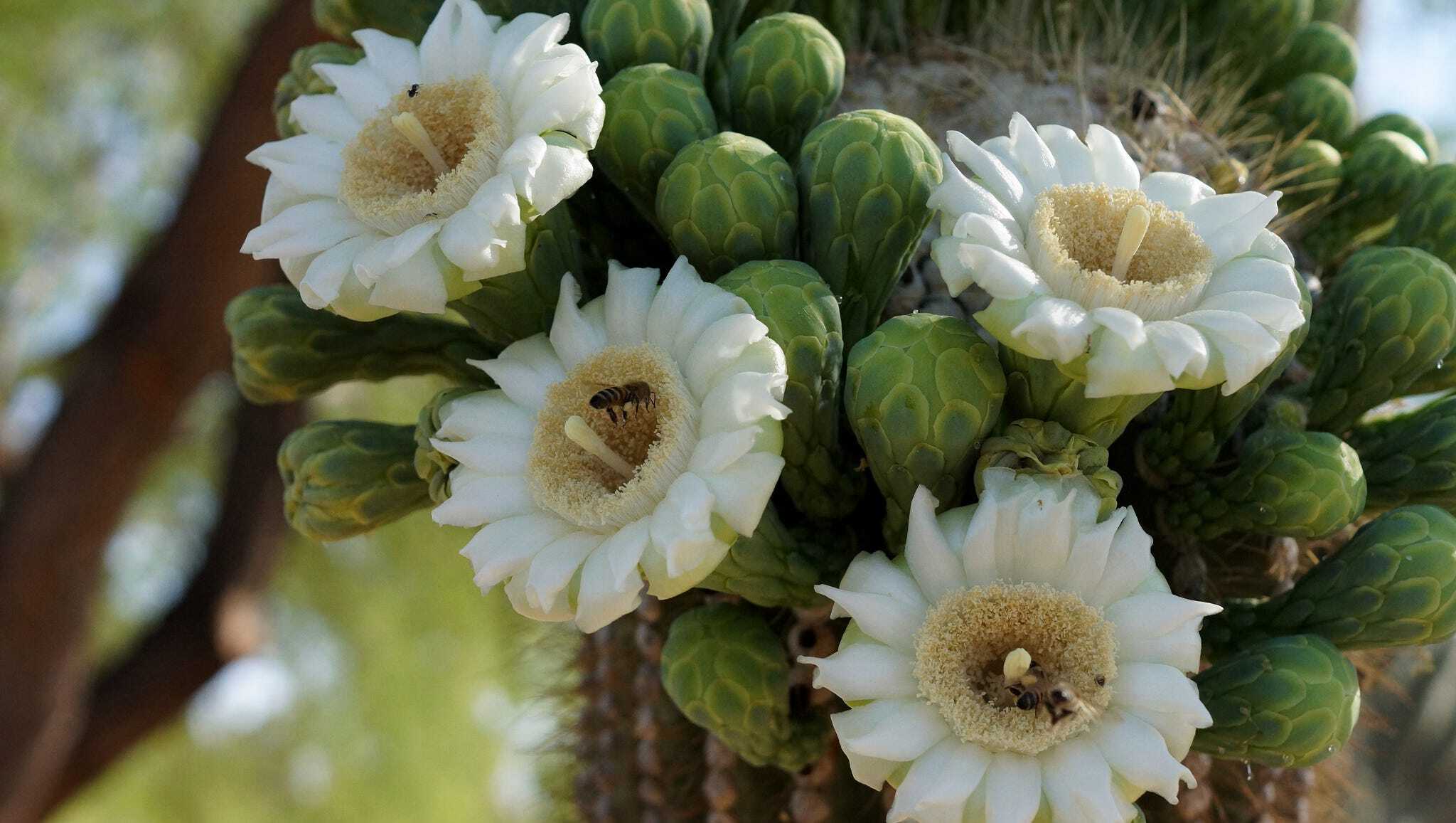

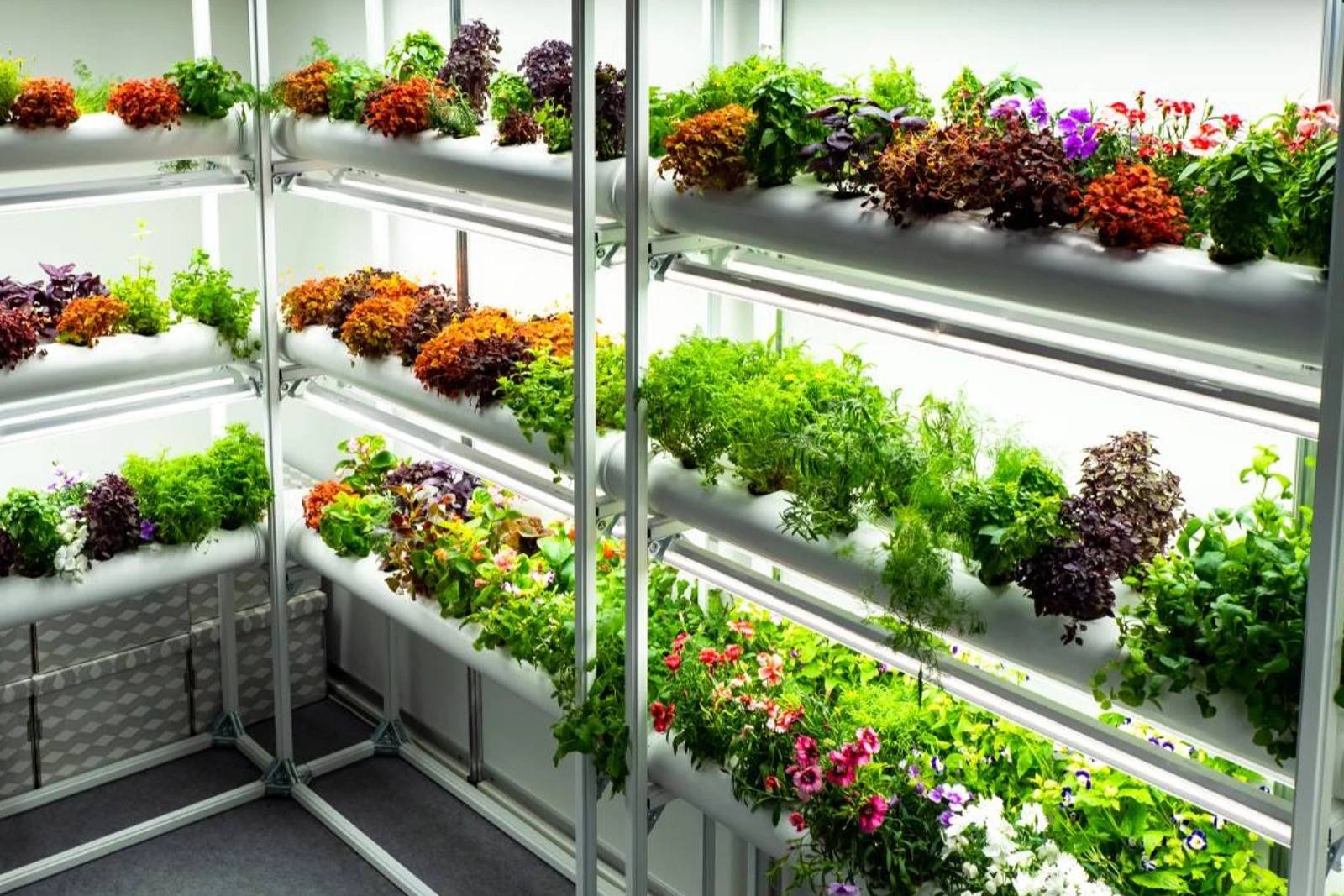
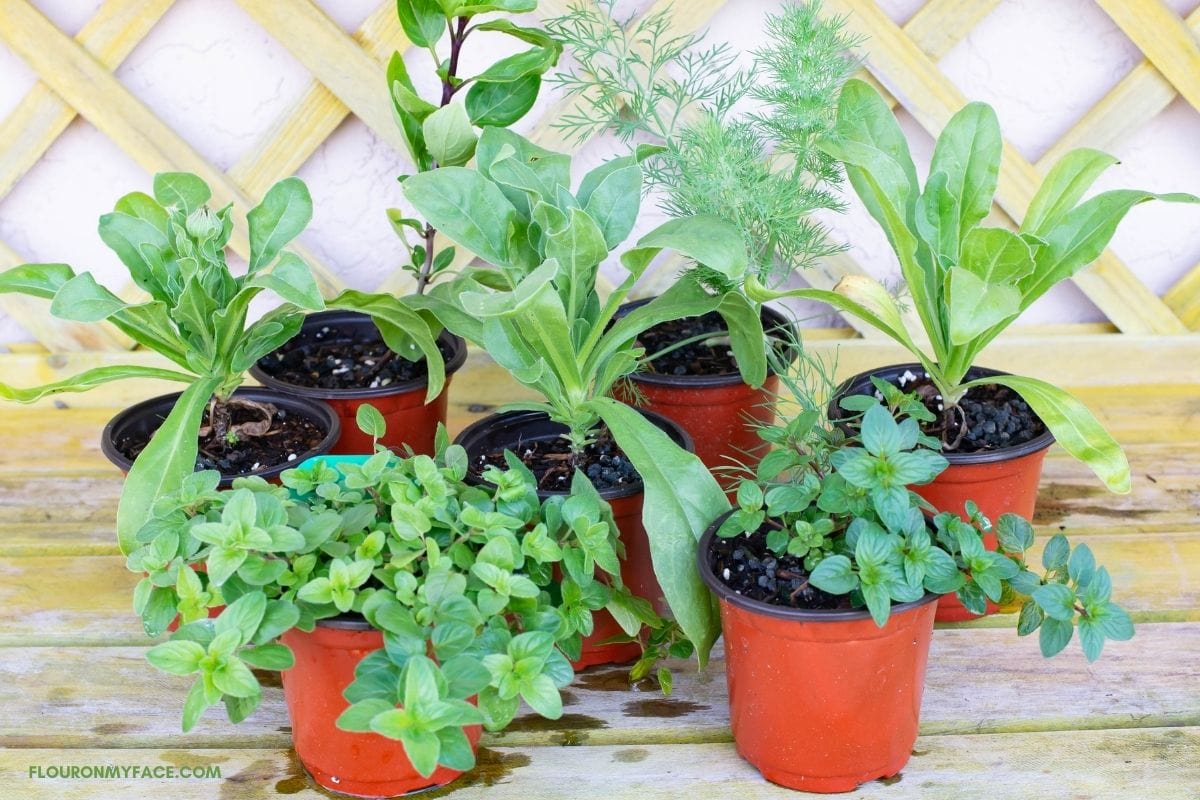
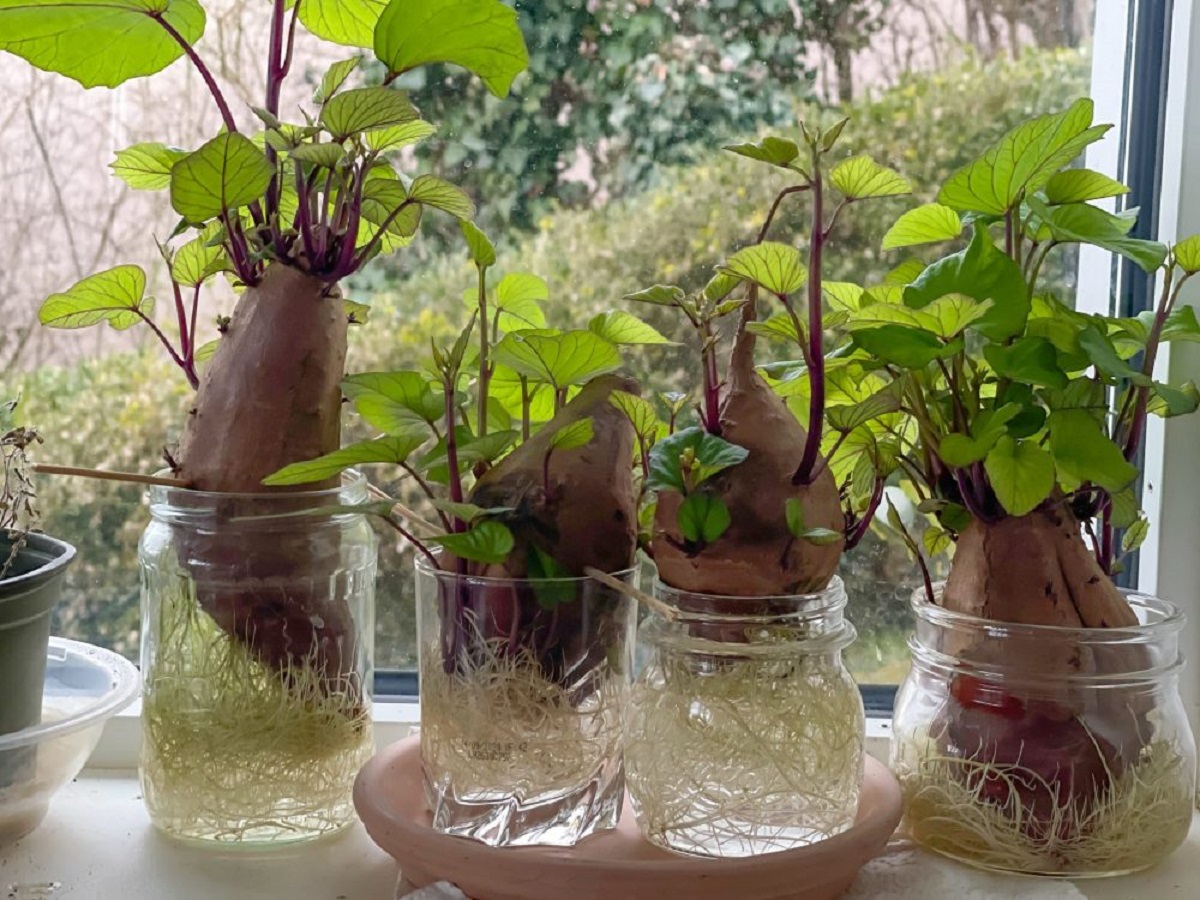
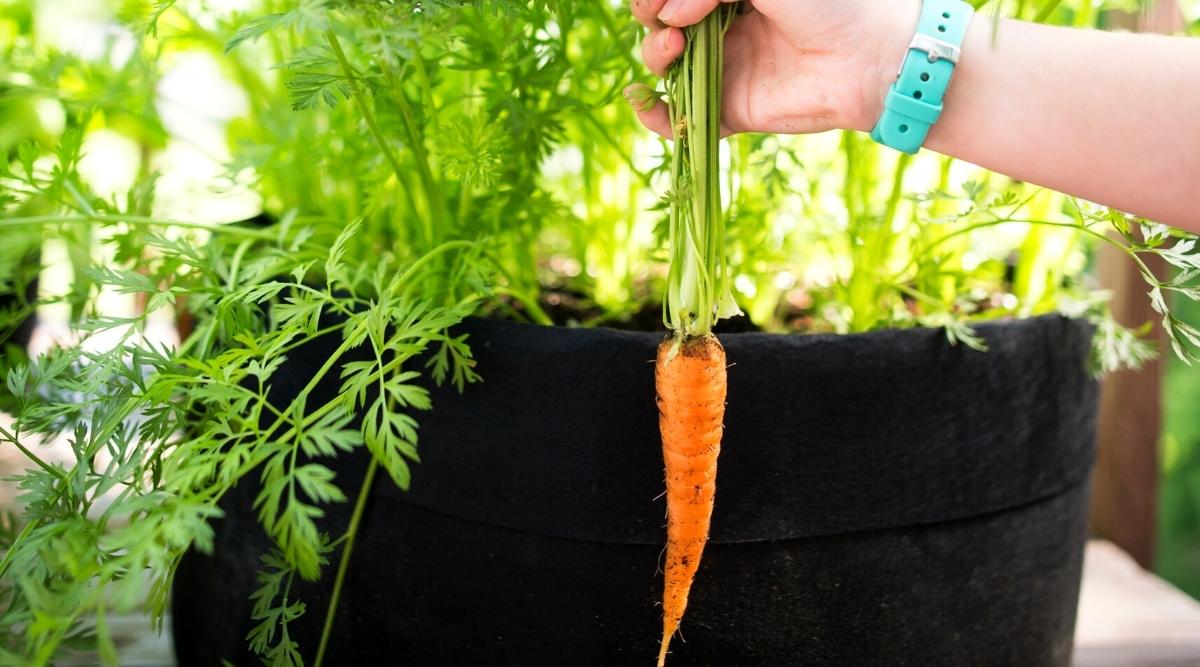
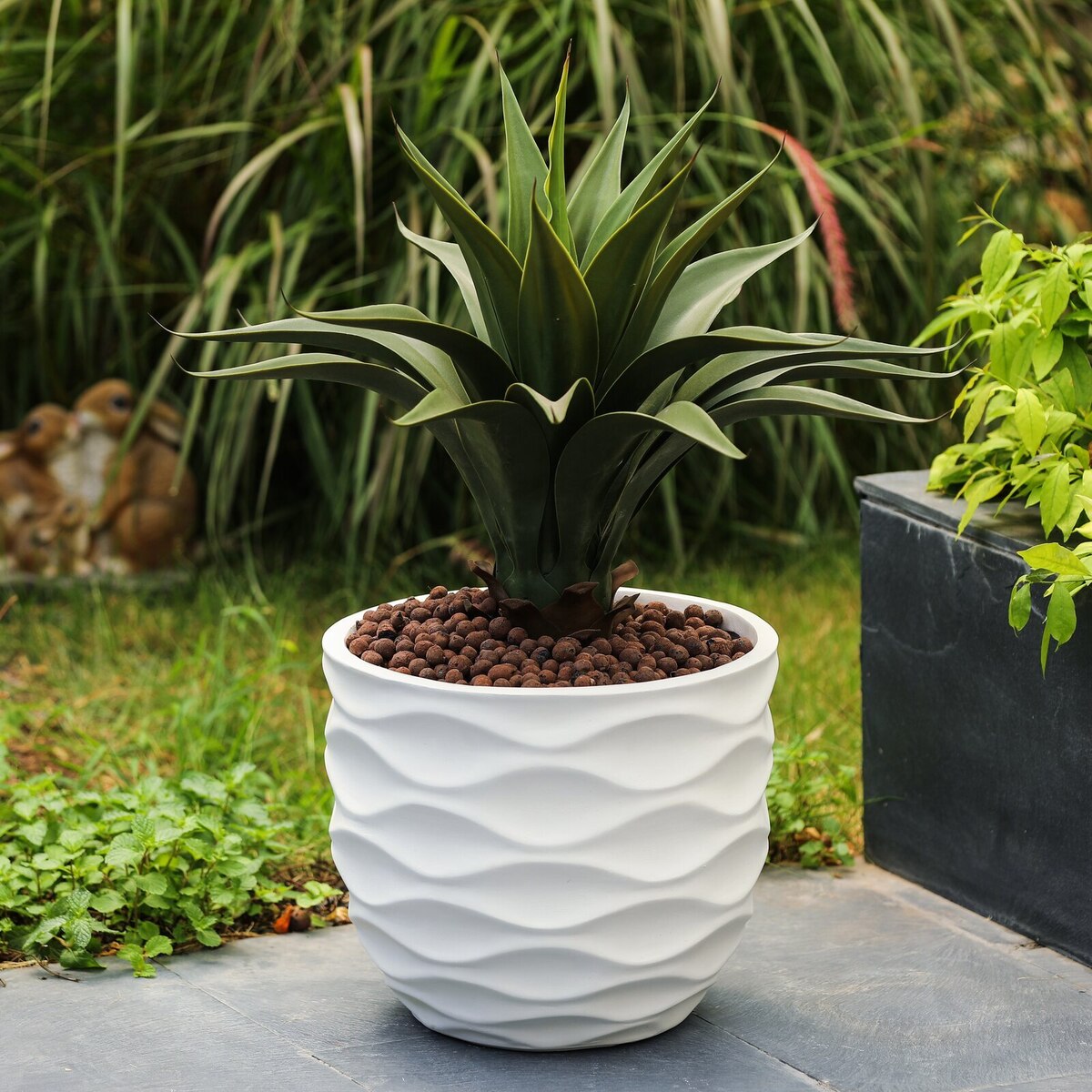
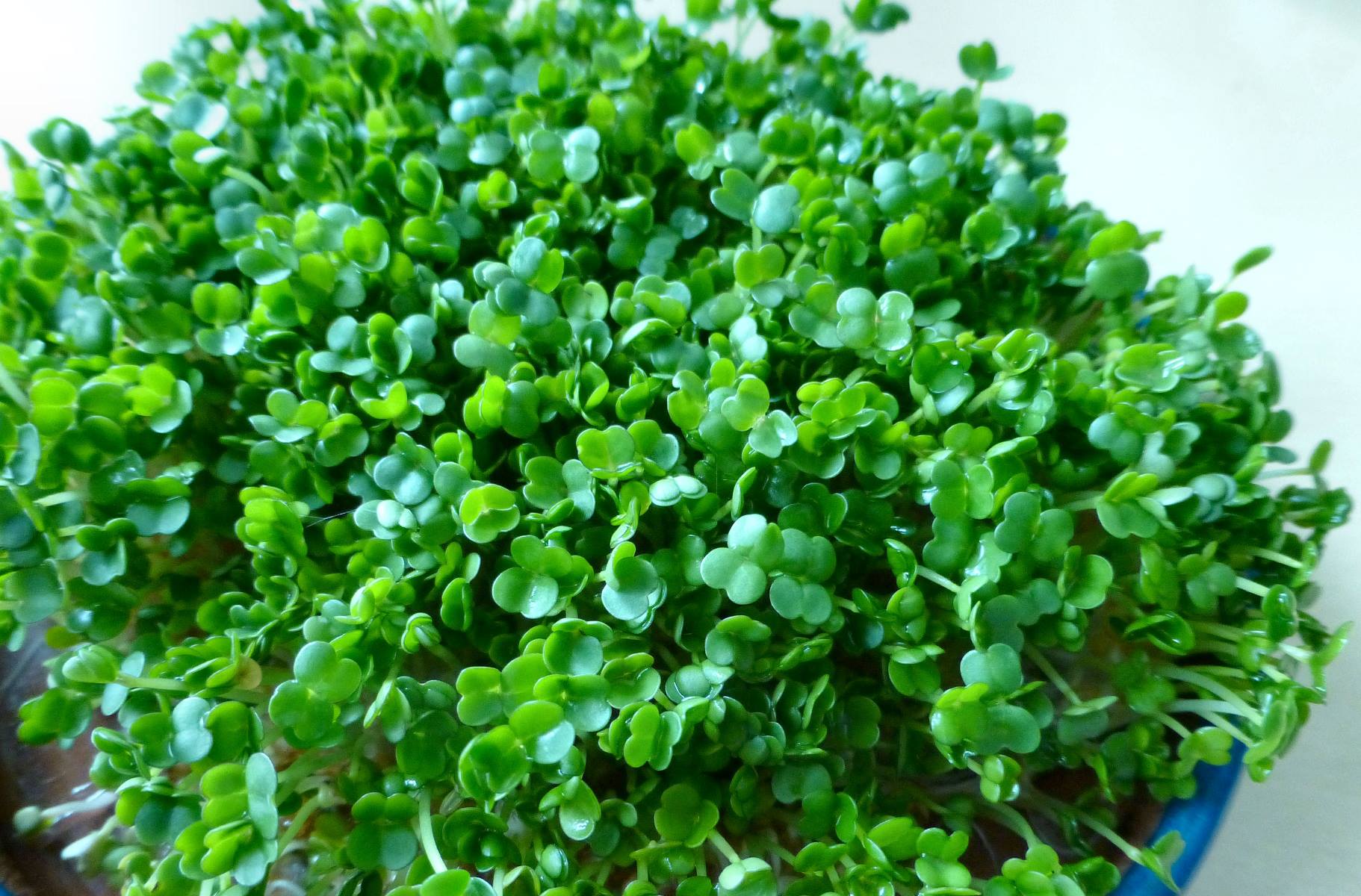
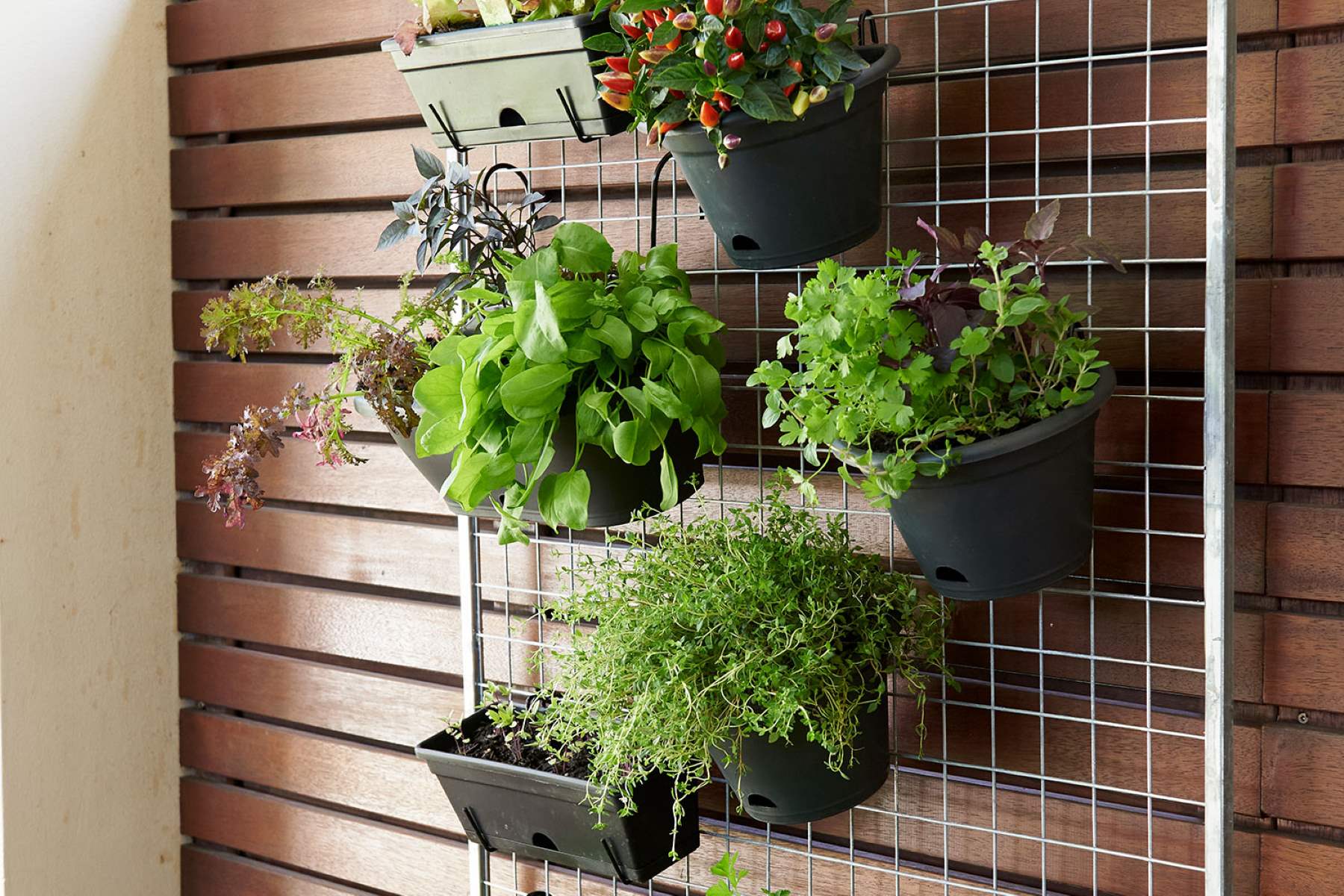
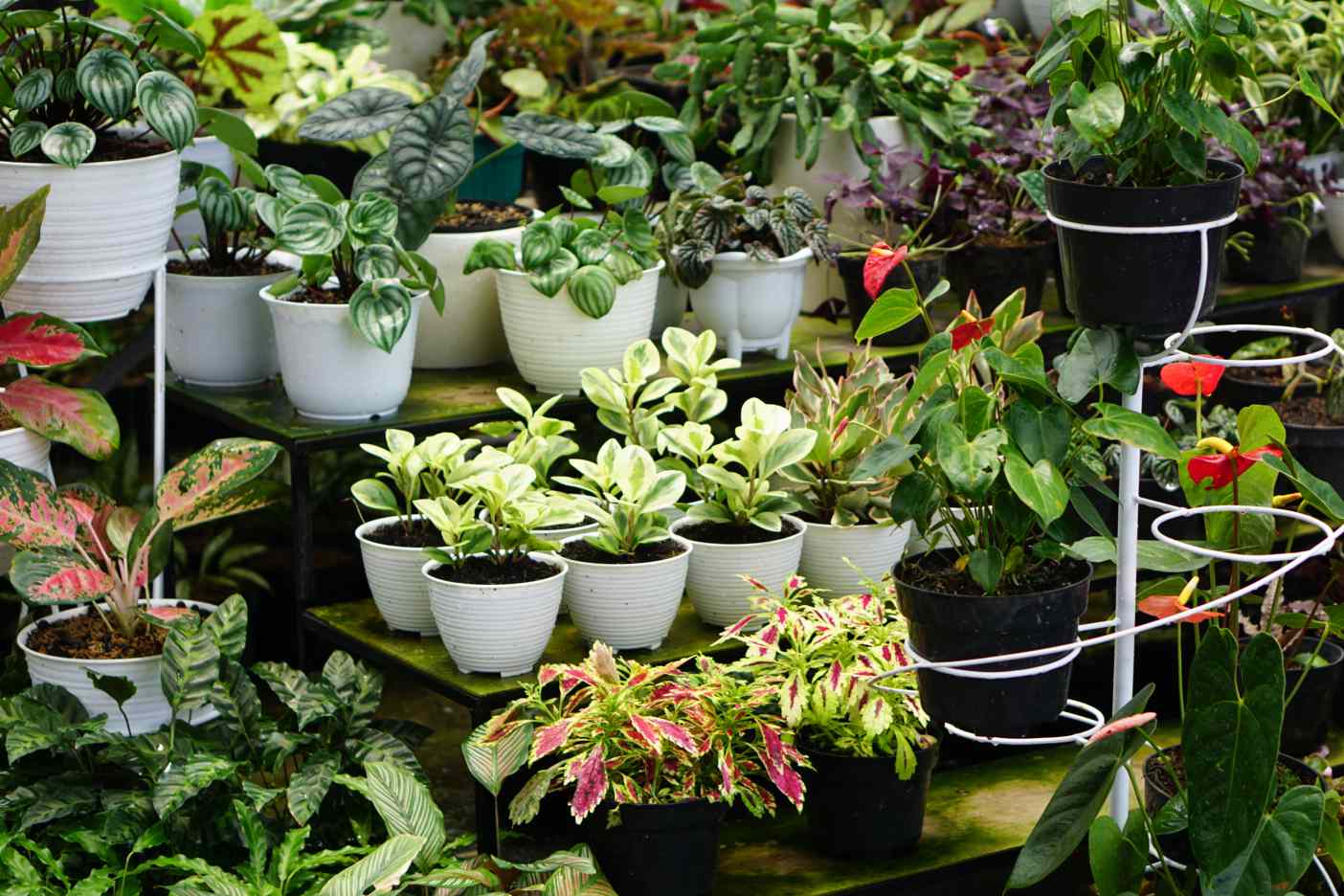


0 thoughts on “Vegetable Garden Container Ideas For Growing Crops In Pots”